Running a contest or a promotional giveaway is one of my favorite ways for a company to connect with their customers—and to turn that attention into measurable growth.
But like so many other aspects of business, too many people execute giveaways poorly and leave money (and goodwill) on the table.
That’s okay… for now. You’re about to fix it.
While it may sound simple, promotional campaigns aren’t as easy as picking a random name from a hat. The best ones are planned, compliant with platform and legal rules, and built to capture long-term value.
You want to run a giveaway that creates brand awareness, grows your list and audience, and ultimately generates a profit for your company.
When done correctly, the hard costs can be minimal—and the upside in reach, email signups, and sales can be substantial.
Contests can even earn you free advertising via shares, duets, stitches, reposts, and UGC that keeps spreading long after the prize is claimed.
This is especially true if you use social media as the primary platform for your giveaways and design them for feed, Stories, and short-form video.
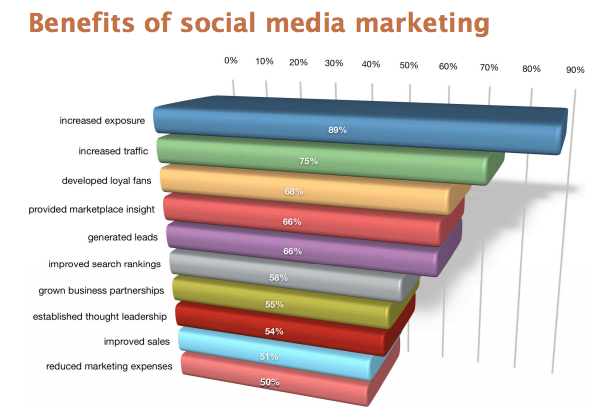
Most marketers say social media campaigns like giveaways increase brand exposure and accelerate audience growth.
In addition to exposure, social media marketing:
- generates qualified leads and email subscribers you can nurture
- increases website traffic and product page visits
- improves customer relationships through two-way engagement
- helps search rankings by earning mentions, links, and branded searches
That’s what to keep front and center.
Giveaways are a marketing tactic—not a random act of generosity.
If you’re not using them to promote your brand, collect first-party data, and ultimately drive profit, you’re doing it wrong.
I’ve run plenty of these and learned what works.
I’ll show you how to run a profitable giveaway and share clear examples you can model.
Figure out what kind of contest you want to run
Not all promotional contests are the same, and the distinctions matter for performance and compliance.
There are three main types of promotions you can run:
- Contest
- Sweepstakes
- Lottery
If you’re running a contest, participants must do something requiring skill or effort (e.g., photo, video, essay, design, or caption) to win a prize.
Popular formats include photo, video, essay, and caption contests—great for user-generated content that you can repurpose (with permission).
The winners are selected by voting or by a defined judging panel using published criteria.
Here’s an example:
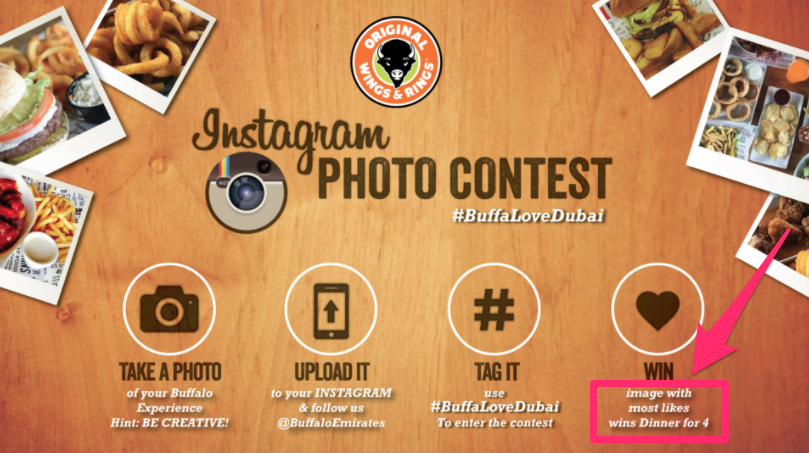
The picture that earns the most valid likes (within the entry window) wins—simple and transparent, as long as you define how likes are counted and audited.
A sweepstakes, on the other hand, requires no skill and is based entirely on chance.
Winners are determined randomly from eligible entries using a fair method such as a randomizer.
Purchases, payments, or any form of “consideration” cannot determine the winner of a sweepstakes—include a free alternate method of entry to keep it compliant.
A lottery means contestants provide consideration (like money) for a chance to win a prize.
For example, buying a ticket solely for a chance to be selected is a lottery.
Don’t do this.
In fact, state and federal laws heavily regulate lotteries. Unless you’re an approved operator, avoid any pay-to-play structure.
It’s in your best interest to stick to contests and sweepstakes and remove one of the three elements—prize, chance, consideration—so you’re not accidentally running a lottery.
Before you get started, decide whether you want winners selected randomly or by skill & judging—and how that supports your goals.
There’s nothing wrong with a sweepstakes, but contests tend to be more effective for engagement and UGC when you can handle moderation.
When your customers know effort improves their chances, they get far more invested in your brand.
Choose the right platform
Now that you’ve decided whether you’ll run a contest or sweepstakes, it’s time to figure out where you’ll host it.
- X (formerly Twitter)
- Your website
All of these are viable options. You can also amplify reach with short-form video platforms and communities your audience already uses.
You could potentially run the same promotion across multiple platforms—just be sure each platform’s rules are followed.
Select a winner on each one if you’re running separate entry pools, and say so up front in the rules.
That structure encourages fans to participate more than once and multiplies your exposure without dramatically increasing cost.
Here’s an example of a website contest from Fairmont Hotels & Resorts:
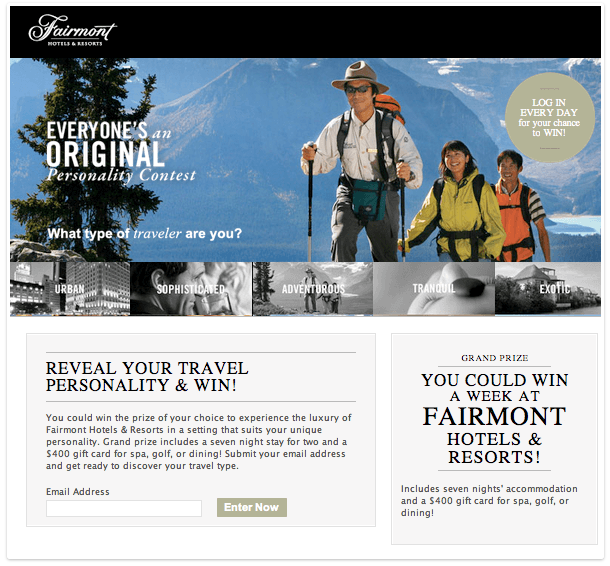
It’s professional, on-brand, and clearly written—exactly what you want on a landing page.
With that said, don’t limit yourself to your website alone.
How often do people proactively visit your site compared to scrolling social feeds?
Probably not as often—so meet them where they are, then bring them to your site to capture email and consent.
That’s why I recommend using social platforms as primary discovery channels and your site as the hub for entries and terms.
It’s a great way to establish brand loyalty and drive first-party data you control.
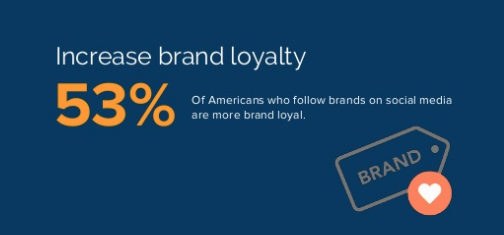
The people who follow you on social media are already interested in your business—giveaways reward them and attract similar audiences.
Running a giveaway there will pique interest even more and spark UGC you can reshare (with permission and proper credit).
Plus, actions like likes, comments, and shares can surface your promotion in followers’ feeds or Stories, extending reach through the algorithm.
Set a deadline
It sounds obvious, but unclear timelines are a common mistake—and they create friction.
Your deadline needs to be explicit for a few reasons: clarity, fairness, and auditability.
Let’s say someone wants to enter your giveaway.
If they don’t see an entry window with date, time, and time zone, they may assume it’s already over and bounce.
You also miss out on organic amplification if they choose not to share something that looks ambiguous.
Another reason to post the deadline is to avoid late entries and disputes.
Pretend you’re running an Instagram contest where the winner is selected by highest likes on a photo within the entry window.
You choose a winner, then someone posts later and surpasses the like count.
This contestant contacts you for the prize.
Now what?
You’re in a tough spot. Avoid it by stating entry open and close (with time zone), plus how tie-breakers and like counts are verified at cutoff.
Adding a deadline is simple. Include the date, exact time, and time zone, and note whether you reserve the right to extend for technical issues.
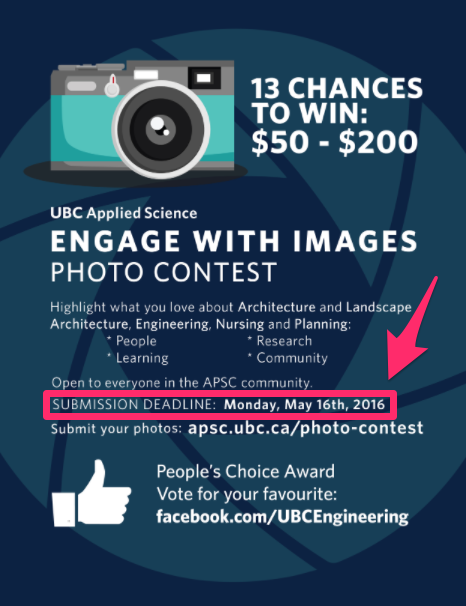
See how clear that is?
Every promotional giveaway needs a clearly posted timeline—including entry window, winner selection date, and notification date.
It will save you headaches and keep the experience fair for everyone.
Make sure the rules are clear
Piggybacking on the timeline: ambiguity equals complaints. Spell everything out to prevent confusion and protect your brand.
Depending on your location, rules vary by state or country, and certain industries have extra restrictions.
Make sure your promotion fits applicable regulations and platform policies before you post.
Here are items commonly included in contest and sweepstakes rules:
- Eligibility (age, location, excluded regions, employee restrictions)
- No purchase required (include a free alternate method of entry)
- Purchases don’t increase chances of winning; odds depend on number of entries
- Dates (entry window, winner selection date, and notification timeline)
- Judging criteria (for contests) and how ties or ineligible entries are handled
- Privacy and publicity terms (permission to announce winner; how data is used)
- Odds of winnings and prize details (ARV, substitutions, restrictions)
If you’re running a promotion on a specific platform, make sure you’re compliant with that platform’s rules.
For example, you must acknowledge your promotion is not endorsed, sponsored, or administered by Facebook in any way.
Facebook also prohibits using phrases like:
- “share on your timeline to enter”
- “post this on a friend’s page to enter”
- “tag your friends to increase chances of winning”
Encourage engagement within the rules. Also disclose any brand partnerships, and obtain explicit permission to reuse UGC in your marketing.
Here’s a snippet from TMZ’s contest rules and regulations:
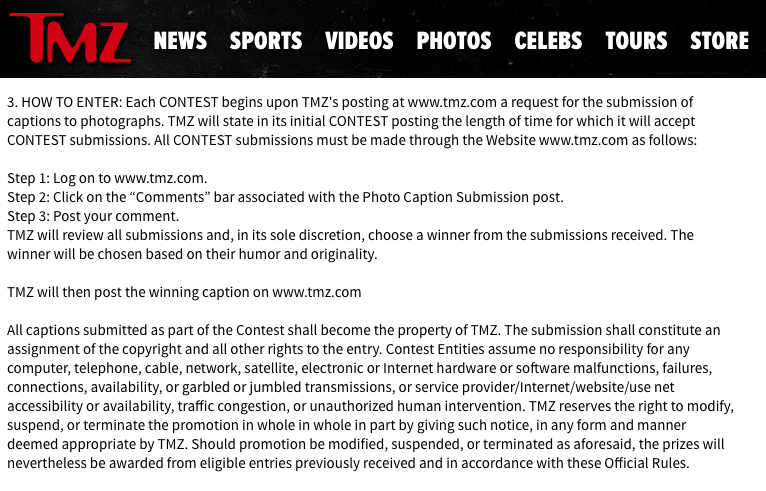
The full page is much longer, but they clearly and thoroughly post everything to avoid confusion, liability, or legal trouble—exactly what you want.
If your rules are lengthy, provide a short summary where you promote the giveaway and link to the full terms on your website.
That’s far more effective than trying to cram legal text into a single social caption.
The prize needs to be relevant
What are you giving away?
Choose a prize that’s aligned with your products, category, and audience—something your ideal customer would actually buy.
Let’s say you specialize in snowboarding and ski equipment.
Sending the winner to the Bahamas doesn’t speak to your audience.
Flying them to a ski lodge in Colorado—or giving them a gear bundle or season pass—makes far more sense.
If you’re giving away a physical product, include a photo of it so entrants can visualize what they’re playing for.
“Win a new camera” is less compelling than seeing the exact model in a crisp photo with key specs.
Here’s an example of a giveaway from Ticketmaster:
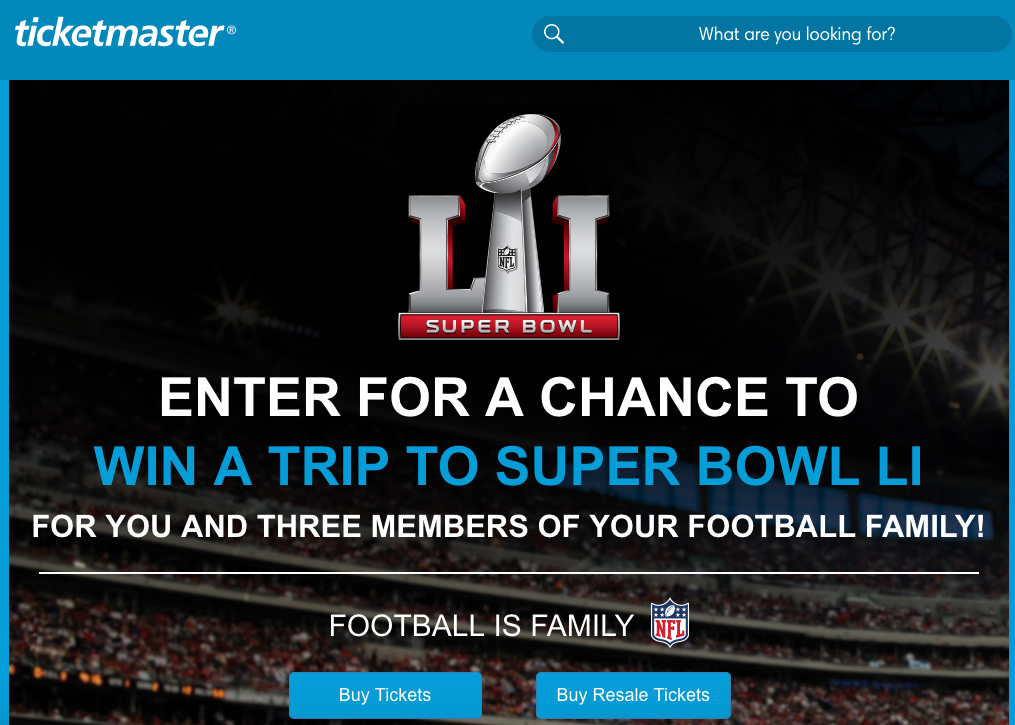
It’s relevant.
You can buy tickets to sporting events on their website, so they’re offering a chance to win a trip to the Super Bowl.
Although they didn’t show the physical tickets, the Super Bowl logo and experience details do the job.
Visuals grab attention faster than text—use them wherever you announce or recap your promotion.
That’s why you should pair every prize description with strong imagery or video.
Create a customized hashtag for your giveaway
Hashtags are one of the best ways to promote your brand on social media and organize entries you’ll need to review.
Come up with something unique that fits your brand voice and clearly references the promotion.
Use that research as a guide to create your own. Check that no one else is using it and that it doesn’t conflict with another brand’s trademark.
If you already use branded hashtags, create a fresh one for each new promotion so entries are easy to separate and judge.
Here’s a great example of how High Society Freeride used a unique hashtag to promote their giveaway:
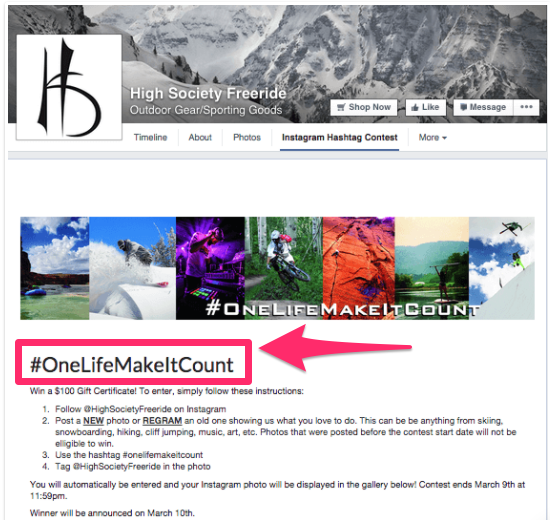
Notice the smart capitalization so the hashtag pops and is easy to read in a fast scroll.
#OneLifeMakeItCount reads much better than #onelifemakeitcount—clarity wins.
The hashtag can also serve as your entry mechanic and archive.
Clicking the tag lets you view all the pictures, videos, and posts in one place to qualify and judge entries.
That’s the easiest way to review and score UGC at scale, provided you outline what qualifies as a valid post.
The hardest part is choosing a creative, unique tag.
After that, it requires almost no extra effort or budget to keep entries organized.
Hashtags also increase engagement and make it easier for entrants to spread the word about your giveaway.
Make sure mobile users can access and participate in your contest
I mentioned earlier that you shouldn’t limit a giveaway to your website.
Keep mobile users front and center when planning your mechanics, media, and landing pages.
Mobile users spend the majority of their time in apps—so design your flow for in-app discovery and quick, tap-friendly actions.

Consider platforms built around mobile experiences and short-form content.
Instagram is a top choice for this, as are other social apps where your audience already creates and consumes vertical video.
Facebook and X also have robust mobile apps, which is why earlier I recommended social platforms as the top discovery channels for giveaways.
If your company has its own mobile app, run the giveaway there as well and use in-app messages or push notifications to drive entries.
You can send users who downloaded the app timely notifications about the promotion, winners, and last-chance entry reminders.
Allow contestants to share the contest with friends and family
To get maximum exposure, your giveaway needs to be easy (and enticing) to share.
Earlier I mentioned that some platforms, such as Facebook, prohibit specific statements that require sharing or tagging to enter.
But you can still include social sharing icons on your website and encourage entrants to spread the word in compliant ways.
Here’s a great example of how Fatherly did this to promote their sweepstakes:
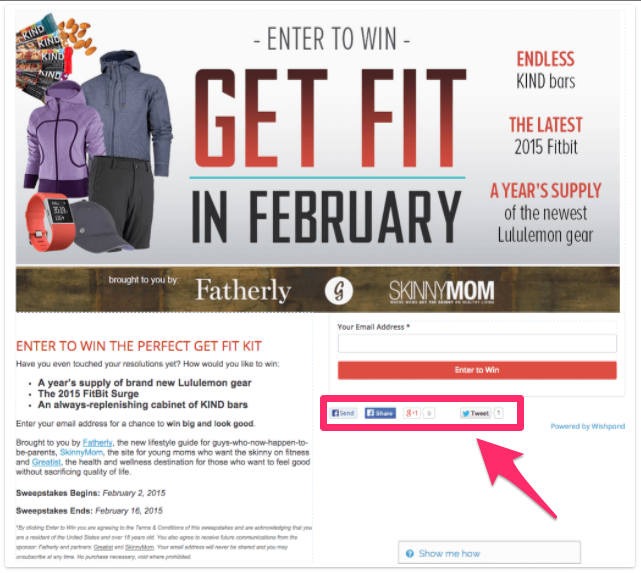
Again, the whole idea behind a giveaway is to generate profit and long-term value for your company—not just attention.
Allowing users to share the promotion drives more traffic to your site, grows your list, and can lift conversions when you nurture new subscribers.
Notify everyone when you’ve selected a winner
This ties back to your timeline—don’t leave people guessing.
Take your deadline one step further by communicating exactly when the winner will be chosen and how they’ll be notified.
For example, entries may close the last day of the month at 11:59 p.m. (with time zone clearly stated).
It could take a week or two to review entries and select a winner, especially for popular contests—say that up front so expectations are set.
Make it clear how and when a winner is announced, and whether you’ll reach out privately first before posting publicly.
Look at how Starbucks did this to announce the winners of their red cup contest:
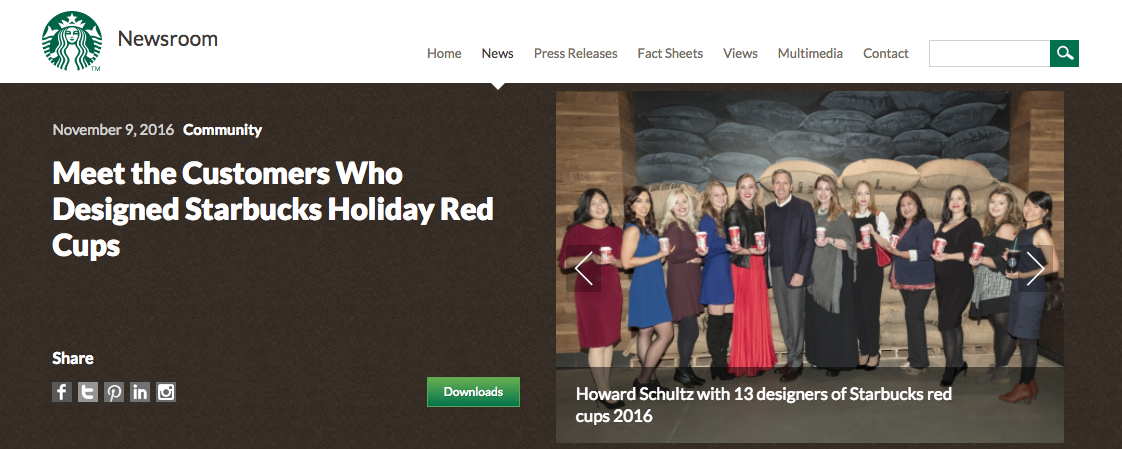
Make sure you have the winner’s consent to reveal their identity if you plan to do so. Include alternates in case you can’t reach the first winner within a set timeframe—outline all of this in your rules.
Conclusion
Don’t run a giveaway without a clear goal, target audience, and success metrics.
Like every other business decision, this requires planning—a compelling prize, simple entry mechanics, and airtight rules.
First, decide which kind of giveaway you’ll run.
If you want the winner to be completely random, run a sweepstakes with a free alternate method of entry.
Contests are better if you want skill, voting, or judging involved—and if you want reusable UGC.
Run the promotion on multiple platforms (within each platform’s rules) and use your site as the central hub.
Social media works best for loyalty and brand awareness, and it makes sharing effortless when you provide the right assets.
Set a deadline, publish clear rules, and specify how winners are chosen and notified.
Make sure your prize is relevant to your audience and visually showcased.
Create a unique, customized hashtag to organize entries and boost recognition.
When it’s over, announce the winner on the date you promised and close the loop publicly.
What do you do after that?
Keep going—test new mechanics, prizes, and platforms while you measure signups, sales, and lifetime value.
If you follow these tips, your giveaways will be a repeatable, profitable growth channel—not a one-off stunt.
